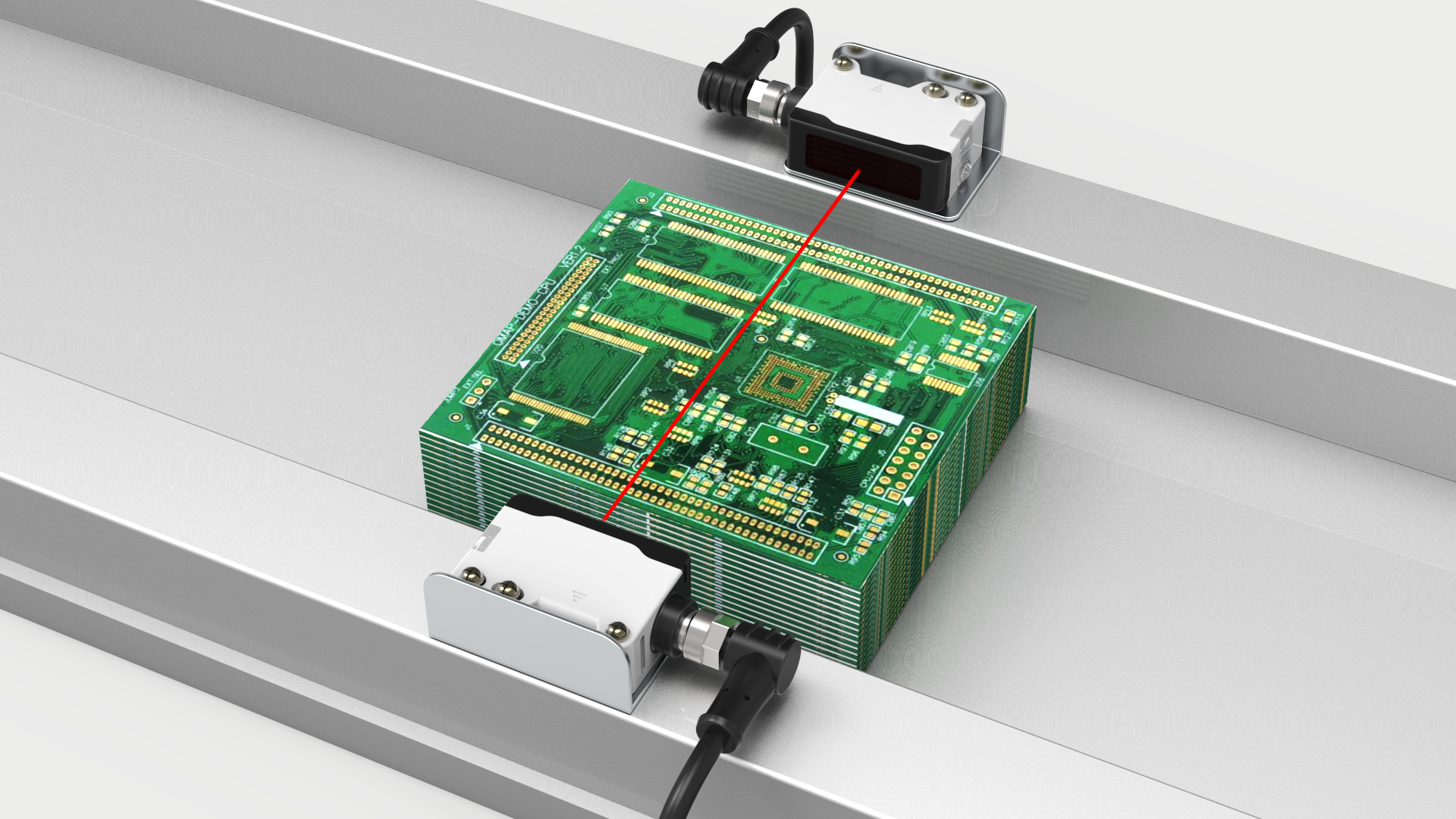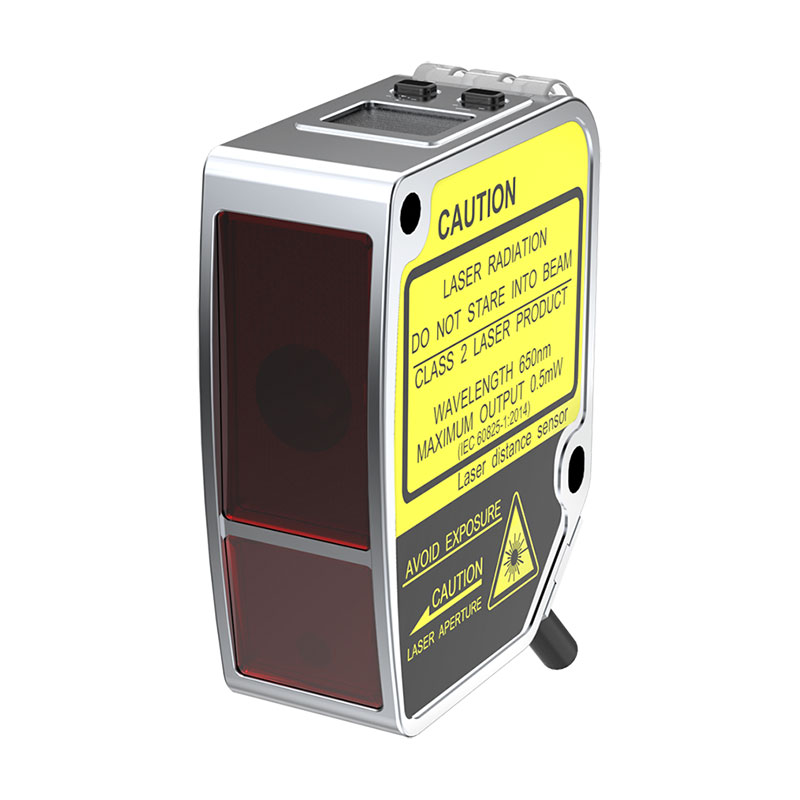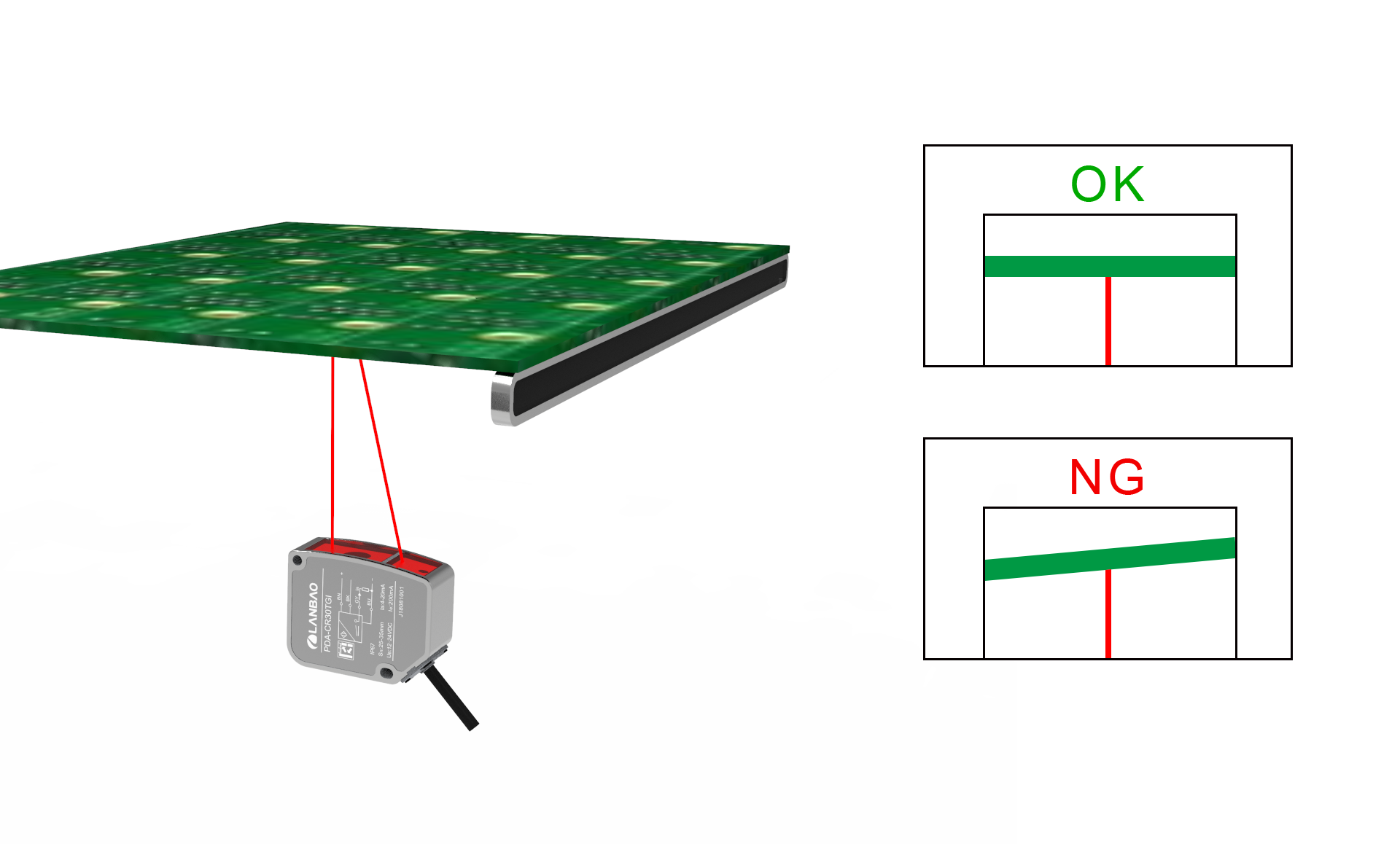The PSE through-beam photoelectric sensor enables short-distance, high-precision monitoring of PCB stack height. The laser displacement sensor accurately measures the height of PCB components, effectively identifying excessively tall components.
Have you ever wondered how the PCB boards, the hearts of the electronic devices we use daily like smartphones, computers, and tablets, are manufactured? In this precise and intricate production process, a pair of "smart eyes" work silently, namely proximity sensors and photoelectric sensors.
Envision a high-speed production line where countless tiny electronic components need to be precisely placed onto PCB boards. Any minute error could lead to product failure. Proximity sensors and photoelectric sensors, acting as the "All-Seeing Eye" and "All-Hearing Ear" of the PCB production line, can accurately perceive the position, quantity, and dimensions of the components, providing real-time feedback to the production equipment, ensuring the accuracy and efficiency of the entire manufacturing process.
Proximity Sensors and Photoelectric Sensors: The Eyes of PCB Production
The proximity sensor is like a "distance detector" that can sense the distance between an object and the sensor. When an object approaches, the sensor emits a signal, telling the device, "I've got an element here!"
The photoelectric sensor is more like a "light detective," capable of detecting information such as light intensity and color. For instance, it can be used to check whether the solder joints on a PCB are secure or if the color of components is correct.
Their role on the PCB production line is far more than just "seeing" and "listening"; they also undertake many important tasks.
Applications of Proximity and Photoelectric Sensors in PCB Production
Component inspection
- Component Missing Detection:
Proximity sensors can accurately detect whether components are properly installed, ensuring the integrity of the PCB board. - Component Height Detection:
By detecting the height of components, the quality of soldering can be determined, ensuring that components are neither too high nor too low.
PCB board inspection
-
- Dimensional Measurement:
Photoelectric sensors can precisely measure the dimensions of PCB boards, ensuring they meet design requirements. - Color Detection:
By detecting color markings on the PCB board, it can be determined whether components are installed correctly. - Defect Detection:
Photoelectric sensors can detect defects on PCB boards such as scratches, missing copper foil, and other imperfections.
- Dimensional Measurement:
Production Process Control
- Material Positioning:
Proximity sensors can accurately locate the position of PCB boards for subsequent processing. - Material Counting:
Photoelectric sensors can count the PCB boards as they pass through, ensuring accurate production quantities.
Testing and Calibration
-
- Contact Testing:
Proximity sensors can detect whether the pads on the PCB board are shorted or open. - Functional Testing:
Photoelectric sensors can work in conjunction with other equipment to test the functionality of the PCB board.
- Contact Testing:
Recommended Products Related to LANBAO
PCB Stack Height Position Detection
-
- PSE - Through-Beam Photoelectric SeriesFeatures:
- Detection Distance: 5m, 10m, 20m, 30m
- Detection Light Source: Red light, infrared light, red laser
- Spot Size: 36mm @ 30m
- Power Output: 10-30V DC NPN PNP normally open and normally closed
- PSE - Through-Beam Photoelectric SeriesFeatures:
Substrate Warpage Detection
By using the PDA-CR product to measure the height of multiple surfaces of the PCB substrate, warpage can be determined by assessing whether the height values are uniform.
-
- PDA - Laser Distance Displacement Series
- Aluminum housing, sturdy and durable
- Maximum distance accuracy up to 0.6% FS
- Large measurement range, up to 1 meter
- Displacement accuracy up to 0.1%, with a very small spot size
- PDA - Laser Distance Displacement Series
PCB Recognition
Precise sensing and recognition of PCBs using the PSE - Limited Reflection Series.
Why Are They Needed?
- Improving Production Efficiency: Automation in detection and control reduces manual intervention and enhances production efficiency.
- Ensuring Product Quality: Precise detection ensures that products meet design requirements and lowers the defect rate.
- Enhancing Production Flexibility: Adaptability to different types of PCB production increases the flexibility of the production line.
Future Development
With continuous technological advancements, the application of proximity sensors and photoelectric sensors in PCB manufacturing will become more widespread and in-depth. In the future, we can expect to see:
- Smaller Sizes: Sensors will become increasingly miniaturized and may even be integrated into smaller electronic components.
- Enhanced Functions: Sensors will be capable of detecting a wider range of physical quantities, such as temperature, humidity, and air pressure.
- Lower Costs: The reduction in sensor costs will drive their application in more fields.
Proximity sensors and photoelectric sensors, although small, play a significant role in our lives. They make our electronic products smarter and bring more convenience to our daily lives. This translation maintains the original meaning and context while ensuring clarity and coherence in English.
Post time: Jul-23-2024





